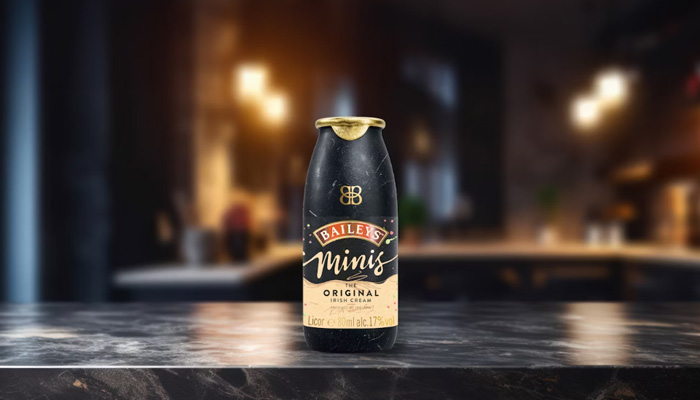
Packaging innovation often sparks curiosity and conversation, and Diageo’s Baileys, the Original Irish Cream Liqueur’s new paper-based bottle, is no exception. Highlighted recently in a Packaging World article by Pat Reynolds, the bottle represents a blend of sustainability efforts and engineering ingenuity. The creation of the 90% paper bottle raises questions about the future of packaging and the creative solutions being explored to address environmental challenges.
The article details the complex process behind creating the Baileys bottle, primarily composed of sustainably sourced wood fiber using Dry Molded Fiber technology. The bottle features a high-barrier, recyclable plastic liner to maintain product integrity while meeting environmental goals.
“To understand why Dry Molded Fiber is potentially such a game changer, it helps to point out that the tried and true method of forming fiber into packaging—think egg cartons, for example—involves considerable time, energy, and water,” writes Reynolds from the July Packaging World article. “It begins with paper, typically recycled materials such as newspapers, paperboard, and other types of paper waste. These are pulped to break them down into individual fibers, and the pulp is then mixed with water to create a slurry. This slurry is poured into a mold designed to create a consistent shape and size for the egg cartons. Next is a press, which applies pressure to remove excess water from the pulp. Last comes drying to remove any remaining moisture.”
Packaging Innovation Beyond Sustainability
The Baileys paper-based bottle represents the ongoing shift in how brands approach packaging design while considering sustainability goals. While sustainability is the driving force, other factors, such as material performance, consumer experience, and scalability, are equally critical. As observers of the packaging industry, we can glean a few key insights from this initiative:
Material Considerations Are Multi-Dimensional
Paper-based bottles like Baileys offer a lower carbon footprint compared to traditional glass or plastic options, but they also introduce challenges in material compatibility, durability, and aesthetics. Balancing these factors while maintaining brand integrity is no small feat, which underscores the importance of holistic design thinking in packaging.
Collaboration Fuels Breakthroughs
The creation of this bottle required extensive collaboration across the supply chain, involving material suppliers, engineers, and brand stakeholders. This level of teamwork highlights a growing trend in packaging: the necessity of partnerships to push boundaries and achieve shared sustainability goals.
Consumer Perception Shapes Success
Innovative packaging must resonate with consumers, both functionally and emotionally. For Baileys, the paper-based bottle conveys eco-consciousness, appealing to environmentally aware consumers. However, brands must ensure the packaging aligns with their product’s positioning and usability.
Scalability Remains a Challenge
While Baileys’ paper-based bottle is an exciting development, scalability will determine its long-term viability. Can this type of packaging be adapted for other product lines or industries? The packaging sector must continue to explore how to scale such innovations without compromising on performance or cost-effectiveness.
A Broader View on the Role of Packaging
Baileys’ paper-based bottle development prompts us to ask broader questions: How can packaging balance sustainability with practicality? What role will innovative materials play in reducing waste globally? And how can the industry ensure that such innovations are accessible across markets, not just in premium segments?
It feels like a glimpse into what’s possible rather than a definitive solution. It’s a step forward that invites both admiration and questions. Where else could this technology go? What does it suggest about the future of sustainable packaging? As packaging observers, these are the kinds of developments that make the industry so engaging to watch.
Whether it’s a bottle, box, or beyond, packaging professionals have a unique opportunity to drive meaningful change—not just in how products are contained but in how brands and consumers alike approach environmental responsibility.
By reflecting on stories like Baileys’ paper-based bottle, we take one step closer to understanding the intricate dance between sustainability, design, and functionality that defines modern packaging. And this bottle reminds us that innovation isn’t always about arriving at the perfect solution. It can be about exploring possibilities and sparking new ideas.
It’s an exciting time to witness the evolution of packaging and think about where it might lead next, and a great time to be a “packaging observer.”

